The Making of a Master
Another blog related to ventriloquist figures includes a discussion about what constitutes a "master" ventriloquist figure builder. I've given it a lot of thought lately and think to ask that question, you must put it in a context related to a specific timeframe.
Newer artforms mature. I don't believe classical music or painting have advanced much in the past few centuries, but newer artforms certainly have. Jazz music, for example, grew a lot in the past century. There are far better trumpet players now, for example, than Louis Armstrong and Bix Beiderbecke. They are considered masters of their art not because their playing has never been equalled—on the contrary, it has been bypassed—but because they were innovators who pioneered a new art form. Likewise cinema is certainly better now than in the days of those venerated masters, D. W. Griffith and Cecil B. DeMille, not only because of newer technology, but because the artform has matured and is delivered to a far more sophisticated audience.
After artforms mature and the masses embrace them, the artforms decline. Thus from Rembrandt we get Andy Warhol and from Charlie Parker we get Kenny G. Because once a form has achieved its pinnacle and can no longer improve, it must still change; each new generation rejects the choices made by its forebears.
Ventriloquist figure making as we know it started with the generation of Theo and Charles Mack and, later, Frank Marshall. Where is the artform today? In my view, it's at its pinnacle. Figure makers today are making exquisite sculptures that are light, durable, and that have a lot of character. Placed next to a Mack or Marshall, these figures would be, in the eyes of someone not interested in antiquity, far superior in their sculptures, their mechanics, and their paint jobs.
Much is made of the paint work of Marshall and the ability of Guyll to reproduce it. Yet when Jimmy Nelson discussed Danny O'Day, he says that the annual Guyll restorations of Danny barely resemble Danny's original Marshall paint job, because Danny was designed for different lighting conditions than we encounter today—harsh stage lighting and monochrome television. Jimmy says Danny's paint job looked very much like the greasepaint makeup of a stage actor of those times. As did Jimmy's face when they made him up to go on television.
Today, Danny looks much more natural because he appears often in natural lighting.
So, is Mashall a master and Guyll not? By today's performance standards you'd reject an original Marshall paint job. Yet he is still the master, not because his work compares favorably with contemporary artists but because he and his generation pioneered the artform as we know it today, making today's ventriloquist figures possible. And his artistic descendents, Ray Guyll, Tim Selberg, and Conrad Hartz take the artform farther, and are themselves master builders of ventriloquist figures.
How about the argument that you cannot be a master unless you do it all in house. That is at best a specious argument advanced merely to dismiss the work of contemporary artists and distance them from the old masters.
Nothing is ever built from scratch. You don't grow your own Linden trees or pick and spin your own cotton.
Marshall may have made some of his own eyes, but he used commercial doll eyes, too. I wonder where he got the wooden spheres and irises for the eyes he did build.
Marshall also employed the services of a duplicarver operator to make heads and hands. Remove a Marshall hand and look at its base. Chances are you'll find the mounting hole for a duplicarver platform.
Newer artforms mature. I don't believe classical music or painting have advanced much in the past few centuries, but newer artforms certainly have. Jazz music, for example, grew a lot in the past century. There are far better trumpet players now, for example, than Louis Armstrong and Bix Beiderbecke. They are considered masters of their art not because their playing has never been equalled—on the contrary, it has been bypassed—but because they were innovators who pioneered a new art form. Likewise cinema is certainly better now than in the days of those venerated masters, D. W. Griffith and Cecil B. DeMille, not only because of newer technology, but because the artform has matured and is delivered to a far more sophisticated audience.
After artforms mature and the masses embrace them, the artforms decline. Thus from Rembrandt we get Andy Warhol and from Charlie Parker we get Kenny G. Because once a form has achieved its pinnacle and can no longer improve, it must still change; each new generation rejects the choices made by its forebears.
Ventriloquist figure making as we know it started with the generation of Theo and Charles Mack and, later, Frank Marshall. Where is the artform today? In my view, it's at its pinnacle. Figure makers today are making exquisite sculptures that are light, durable, and that have a lot of character. Placed next to a Mack or Marshall, these figures would be, in the eyes of someone not interested in antiquity, far superior in their sculptures, their mechanics, and their paint jobs.
Much is made of the paint work of Marshall and the ability of Guyll to reproduce it. Yet when Jimmy Nelson discussed Danny O'Day, he says that the annual Guyll restorations of Danny barely resemble Danny's original Marshall paint job, because Danny was designed for different lighting conditions than we encounter today—harsh stage lighting and monochrome television. Jimmy says Danny's paint job looked very much like the greasepaint makeup of a stage actor of those times. As did Jimmy's face when they made him up to go on television.
Today, Danny looks much more natural because he appears often in natural lighting.
So, is Mashall a master and Guyll not? By today's performance standards you'd reject an original Marshall paint job. Yet he is still the master, not because his work compares favorably with contemporary artists but because he and his generation pioneered the artform as we know it today, making today's ventriloquist figures possible. And his artistic descendents, Ray Guyll, Tim Selberg, and Conrad Hartz take the artform farther, and are themselves master builders of ventriloquist figures.
How about the argument that you cannot be a master unless you do it all in house. That is at best a specious argument advanced merely to dismiss the work of contemporary artists and distance them from the old masters.
Nothing is ever built from scratch. You don't grow your own Linden trees or pick and spin your own cotton.
Marshall may have made some of his own eyes, but he used commercial doll eyes, too. I wonder where he got the wooden spheres and irises for the eyes he did build.
Marshall also employed the services of a duplicarver operator to make heads and hands. Remove a Marshall hand and look at its base. Chances are you'll find the mounting hole for a duplicarver platform.


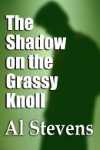
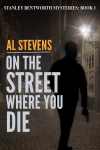
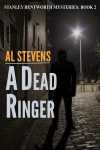
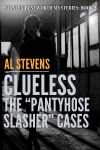
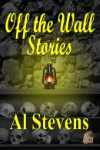

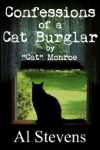

<< Home